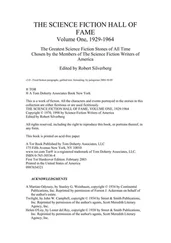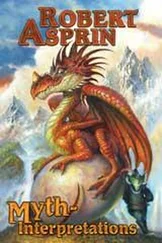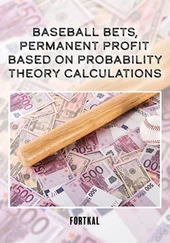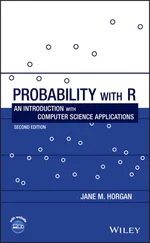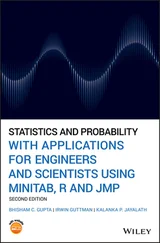Robert P. Dobrow - Probability
Здесь есть возможность читать онлайн «Robert P. Dobrow - Probability» — ознакомительный отрывок электронной книги совершенно бесплатно, а после прочтения отрывка купить полную версию. В некоторых случаях можно слушать аудио, скачать через торрент в формате fb2 и присутствует краткое содержание. Жанр: unrecognised, на английском языке. Описание произведения, (предисловие) а так же отзывы посетителей доступны на портале библиотеки ЛибКат.
- Название:Probability
- Автор:
- Жанр:
- Год:неизвестен
- ISBN:нет данных
- Рейтинг книги:4 / 5. Голосов: 1
-
Избранное:Добавить в избранное
- Отзывы:
-
Ваша оценка:
Probability: краткое содержание, описание и аннотация
Предлагаем к чтению аннотацию, описание, краткое содержание или предисловие (зависит от того, что написал сам автор книги «Probability»). Если вы не нашли необходимую информацию о книге — напишите в комментариях, мы постараемся отыскать её.
distinguished researchers Drs. Robert Dobrow and Amy Wagaman deliver a thorough introduction to the foundations of probability theory. The book includes a host of chapter exercises, examples in R with included code, and well-explained solutions. With new and improved discussions on reproducibility for random numbers and how to set seeds in R, and organizational changes, the new edition will be of use to anyone taking their first probability course within a mathematics, statistics, engineering, or data science program.
New exercises and supplemental materials support more engagement with R, and include new code samples to accompany examples in a variety of chapters and sections that didn’t include them in the first edition.
The new edition also includes for the first time:
A thorough discussion of reproducibility in the context of generating random numbers Revised sections and exercises on conditioning, and a renewed description of specifying PMFs and PDFs Substantial organizational changes to improve the flow of the material Additional descriptions and supplemental examples to the bivariate sections to assist students with a limited understanding of calculus Perfect for upper-level undergraduate students in a first course on probability theory, is also ideal for researchers seeking to learn probability from the ground up or those self-studying probability for the purpose of taking advanced coursework or preparing for actuarial exams.
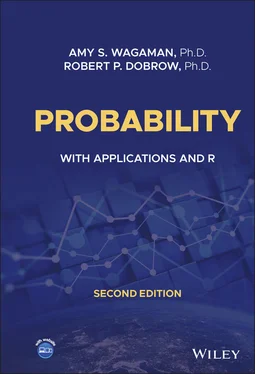
 people. Each person in the subset turns over his/her card, from 0 to 1. The cards taken from left to right form a new binary list. For instance, if
people. Each person in the subset turns over his/her card, from 0 to 1. The cards taken from left to right form a new binary list. For instance, if  and the first and third persons are selected, the corresponding list is
and the first and third persons are selected, the corresponding list is  .
. th position in the list, then person
th position in the list, then person  is selected. If the list is
is selected. If the list is  , then all but the second person are selected.
, then all but the second person are selected. and binary lists of length
and binary lists of length  . Table 1.3shows the correspondence for the case
. Table 1.3shows the correspondence for the case  .
. -element set is equal to the number of binary lists of length
-element set is equal to the number of binary lists of length  . The number of binary lists of length
. The number of binary lists of length  is easily counted by the multiplication principle. As there are two choices for each element of the list, there are
is easily counted by the multiplication principle. As there are two choices for each element of the list, there are  binary lists. The number of subsets of an
binary lists. The number of subsets of an  -element set immediately follows as
-element set immediately follows as  .
.















 with exactly
with exactly  ones. We will do so by first counting the number of
ones. We will do so by first counting the number of  -element subsets of an
-element subsets of an  -element set. In the subset-list correspondence, observe that every
-element set. In the subset-list correspondence, observe that every  -element subset of
-element subset of  corresponds to a binary list with
corresponds to a binary list with  ones. And conversely, every binary list with exactly
ones. And conversely, every binary list with exactly  ones corresponds to a
ones corresponds to a  -element subset. This is true for each
-element subset. This is true for each  . For instance, in the case
. For instance, in the case  and
and  , the subsets are
, the subsets are
